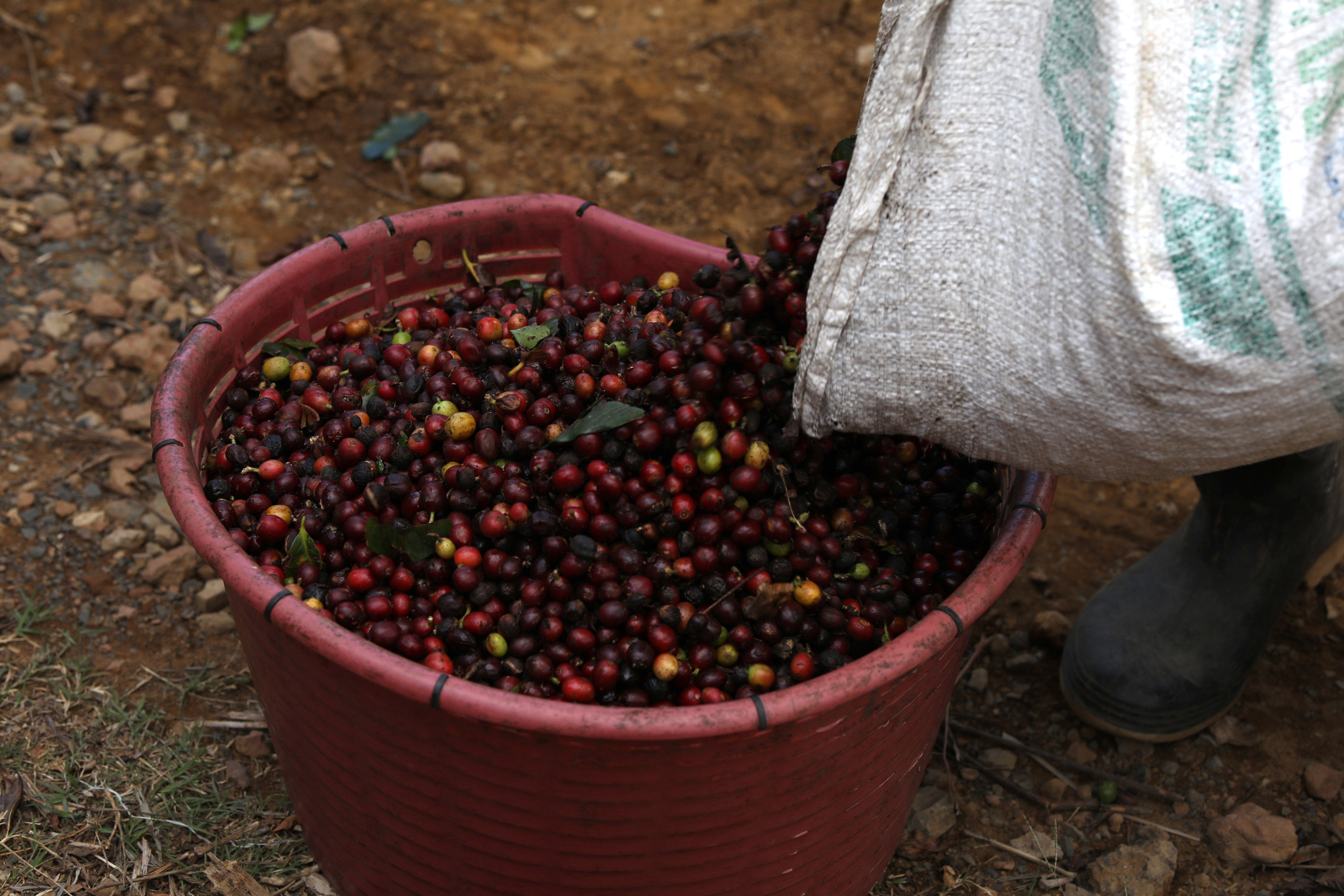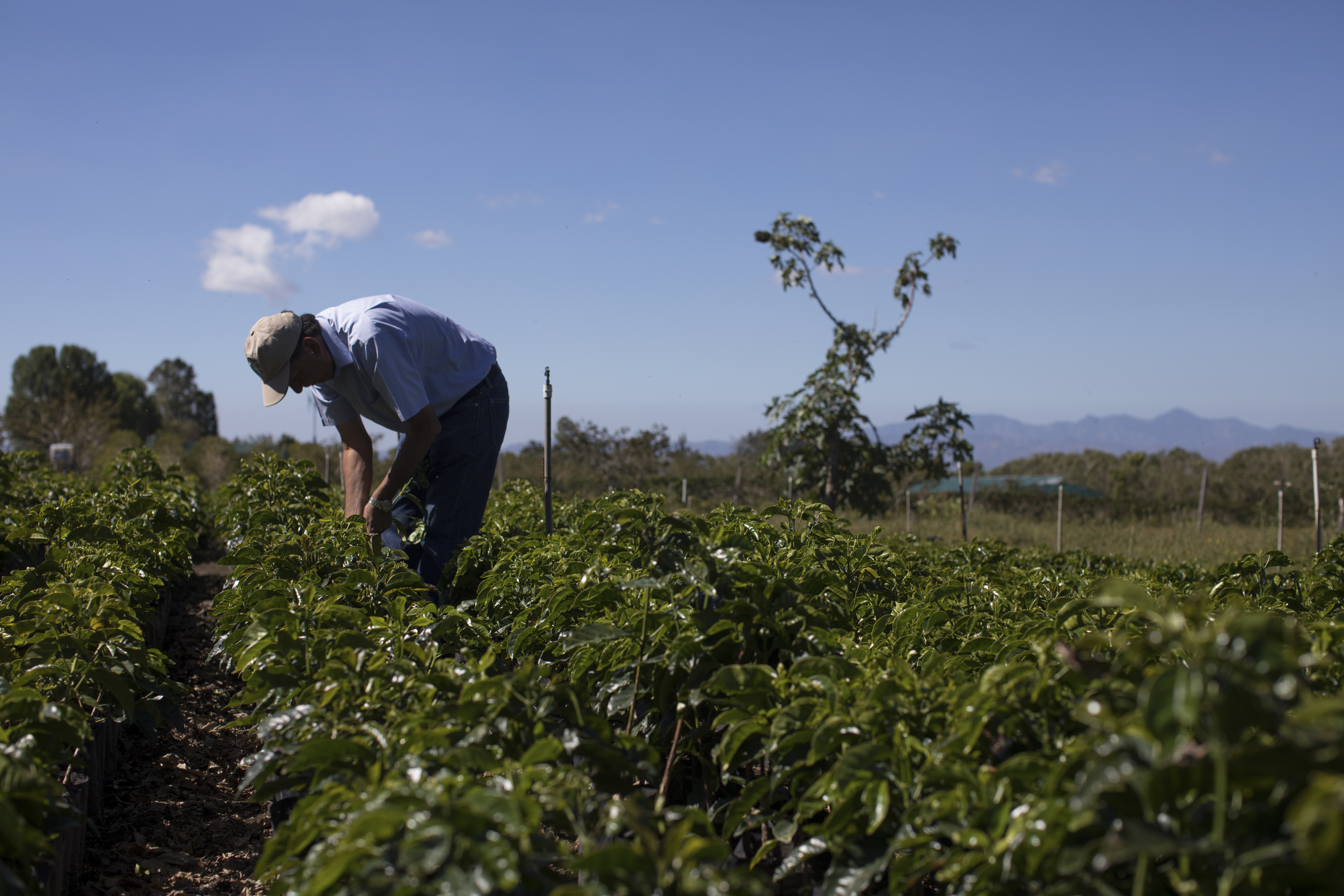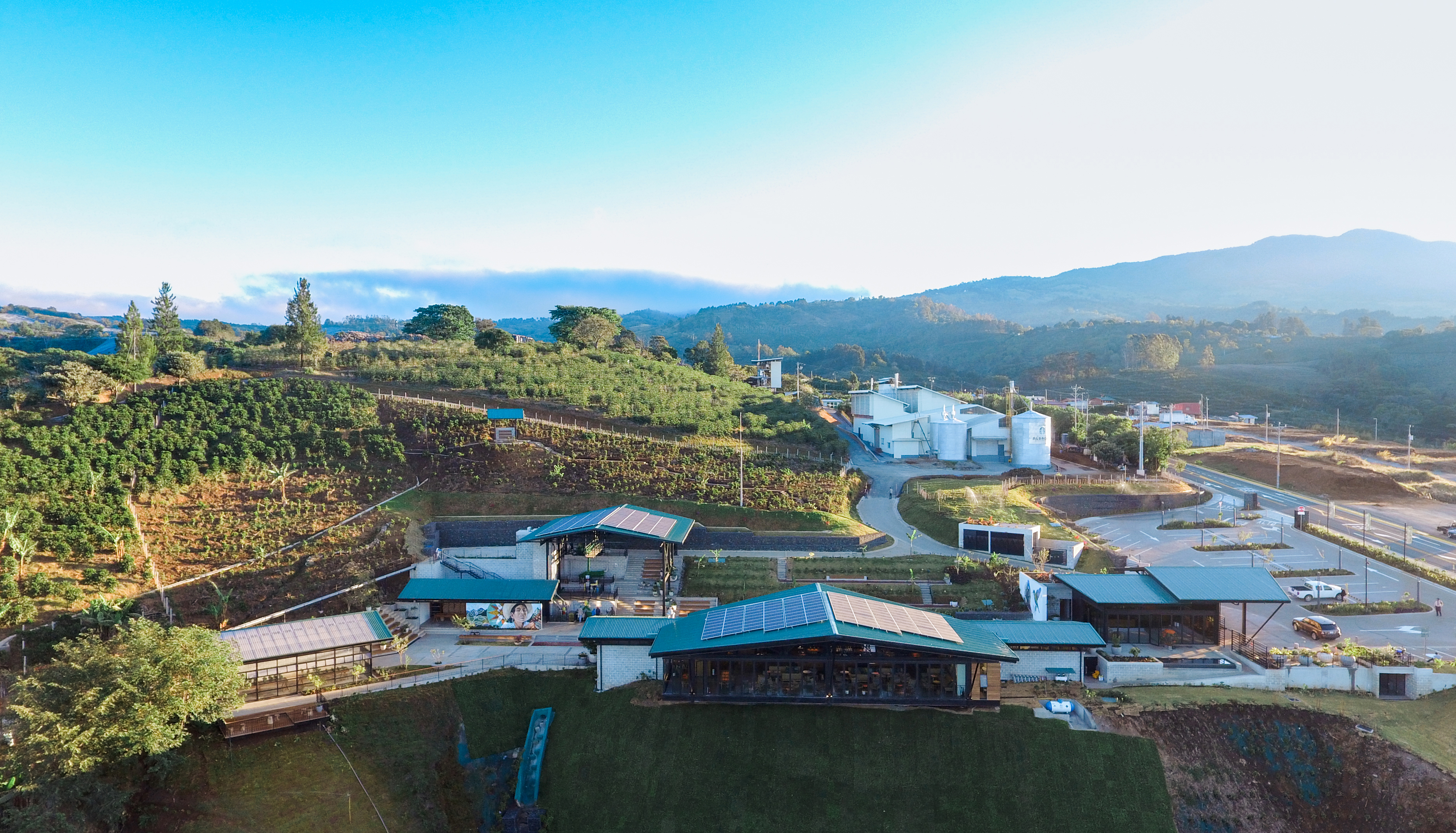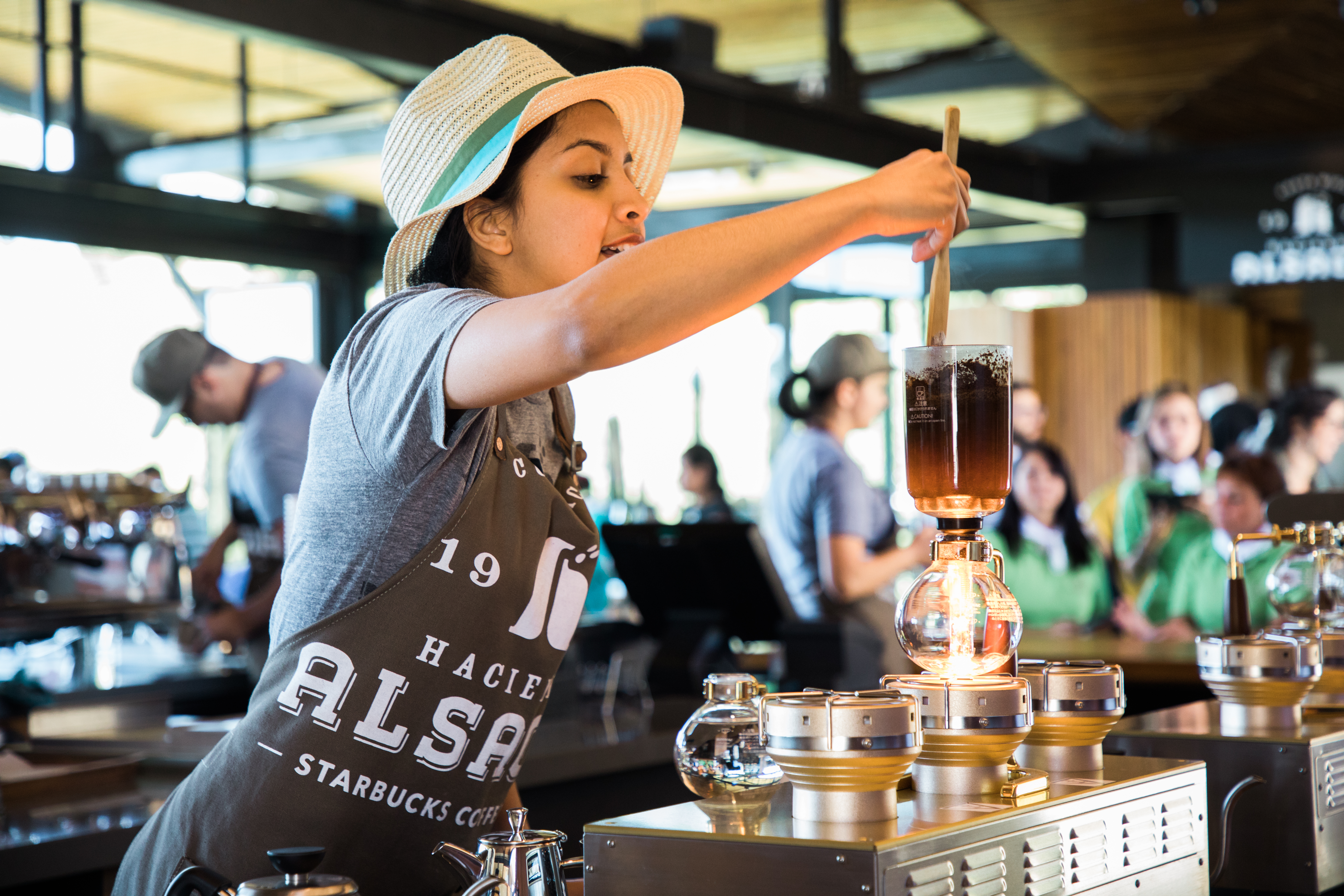
About 45 minutes north of San Jose, Costa Rica, at 5,000 feet above sea level, in a lush valley just off the two-lane highway snaking through the highlands toward Poás Volcano, sits a brand new Starbucks location. This hilltop branch of the planet’s most ubiquitous coffee slinger has many of the classic menu items of a regular Starbucks, though its location is unarguably better — overlooking a farm that just may end up determining the future of coffee.
Hacienda Alsacia is the only farm Starbucks owns, purchased in 2013. The coffee giant may be selling java in more than 24,000 locations in over 70 countries, but the only coffee Starbucks grows itself comes from this 600-acre property, where different strains of trees stand in rows along either side of a V-shaped valley, their deep green leaves shimmering with an almost plastic luster. There’s a nursery, where baby coffee plants are nurtured, and crossed with trees of different varieties. There’s a wet mill, where bright lipstick-red coffee cherries are cleaned and stripped down to the bean, and a dry mill, where coffee cherries are dried and busted open. There’s a newer mechanized dry mill, and a traditional version—which heaps beans in the sun in long, fat rows and periodically pushes a rake straight through the middle to stir them as they dry.
The reason for so many different coffee strains, mills and methods is experimentation. Though much of what gets harvested at Hacienda Alsacia does get packaged for sale, the farm’s total output amounts to an inconsequential blip in Starbucks’ massive efforts to feed your daily soy vanilla latte habit. What the farm really produces is information — designed to ensure that there’s enough coffee in the world to feed your coffee needs in the decades to come.

Just 15 years ago, Costa Rica was producing an average of 36 bags of coffee per hectare; today, the country produces about 22 bags per hectare. Much of the blame for that decrease in productivity, says Hacienda Alsacia General Manager Victor Trejos, goes to a fungus called coffee leaf rust, or CLR, a scourge to coffee growers worldwide. The fungus does especially well in hot and humid conditions with little rain, so it has become more aggressive in a warming world with changing climate patterns, attacking coffee trees at much higher elevations than before.
At Hacienda Alsacia, farmers grow and crossbreed different coffee varieties to find more productive, higher quality strains that are resistant to CLR (so far they’ve developed 17 new varieties). The farm is also home to the first of nine Farmer Support Centers that Starbucks operates around the world, where coffee growers have free access to disease-resistant trees as well as the latest science from Starbucks agronomists, whether they sell to Starbucks or not. It’s open source for the entire industry: an information portal for that helps small farmers immensely.

Until now, Hacienda Alsacia was just a working research and development farm. But as of this March, visitors to the farm can get a taste of how coffee gets made. The farm’s new visitor center includes includes a 90-minute guided tour through mini versions of every step in the coffee-making process: a nursery with seedlings, a grove of full-grown coffee trees where visitors can try on a picker’s basket, a mill where coffee berries are turned to roastable beans, and a roastery where beans are turned into drinkable coffee.
Visitors sip their soil-to-cup coffee at the end of the tour, in a guided cupping at a fully decked-out Starbucks overlooking a waterfall. The visitor center itself is comprised of wide-open buildings with lots of glass and empty space. This is done for a reason—it’s tucked high up into the hillside at one end of a valley with an expansive view over the farm and the dramatic Costa Rican landscape beyond. Any obstruction would be criminal.
Among Starbucks’ 24,000-plus locations around the world, there may be a few that can rival the view at this property, but none of them serves coffee grown, milled, roasted and served right there on site. And no coffee brand on earth can claim such an innovative approach to information sharing, which is cool — regardless of what you think of Starbucks’ latest unicorn frappucino.
In the end, it’s the open source approach to farming that’s the real hook of Hacienda Alsacia. It represents the future of an uncertain industry and proves that as coffee races to adapt to global warming, one small Costa Rican farm (owned by a global company) just might be ground zero.







